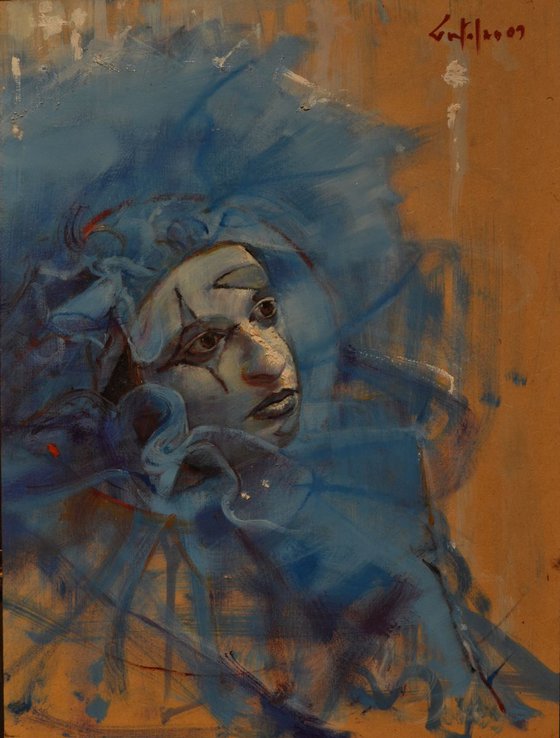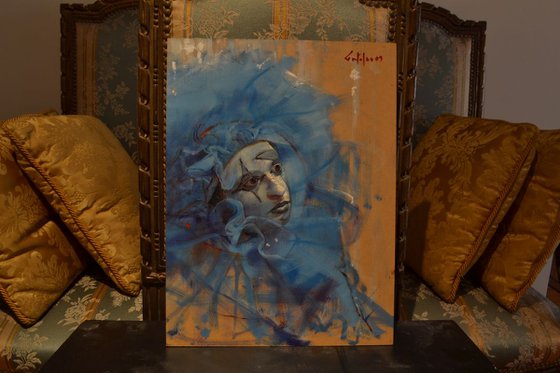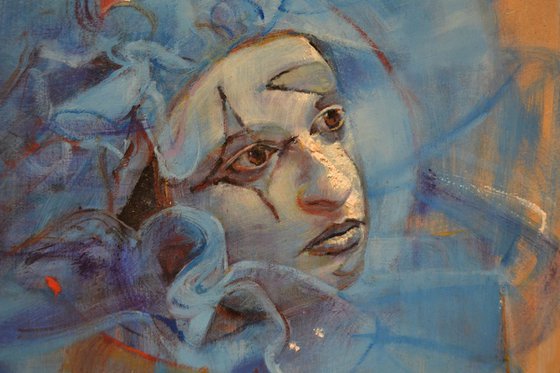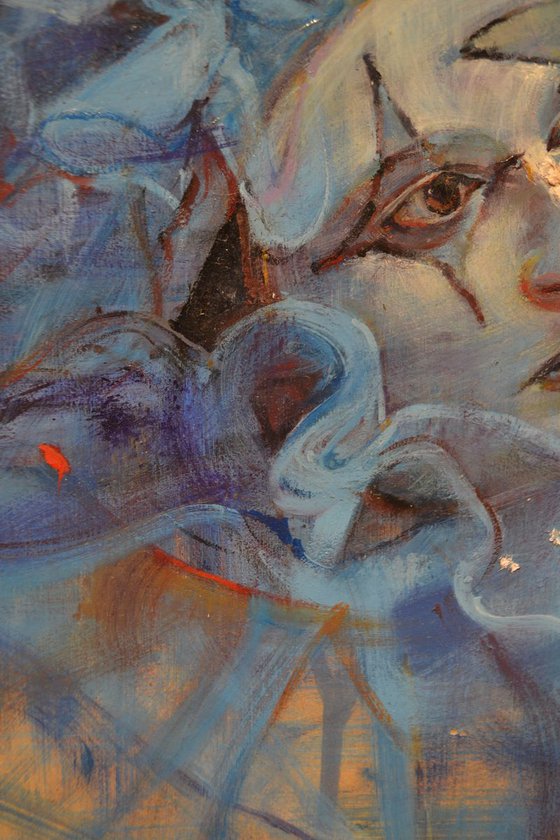- By medium
- By subject
- By budget
- Sales
- Gift cards
- Discover all art
- Artists
- Editors’ picks
- Ideas
Original artwork description:
It is said that the Carnival of Venice was started from a victory of the "Serenissima Repubblica" against the Patriarch of Aquileia, Ulrico di Treven in the year 1162. In the honor of this victory, the people started to dance and make reunions in San Marco Square. Apparently, this festival started on that period and became official in the Renaissance.In the seventeenth century, the baroque carnival was a way to save the prestigious image of Venice in the world It was very famous during the eighteenth century.It encouraged licence and pleasure, but it was also used to protect Venetians against the anguish for present time and future. However, under the rule of the King of Austria, the festival was outlawed entirely in 1797 and the use of masks became strictly forbidden. It reappeared gradually in the nineteenth century, but only for short periods and above all for private feasts, where it became an occasion for artistic creations.
After a long absence, the Carnival returned to operate in 1979.[6] The Italian government decided to bring back the history and culture of Venice, and sought to use the traditional Carnival as the centerpiece of its efforts. The redevelopment of the masks began as the pursuit of some Venetian college students for the tourist trade. Today, approximately 3 million visitors come to Venice every year for the Carnival. One of the most important events is the contest for la maschera più bella ("the most beautiful mask") placed at the last weekend of the Carnival and judged by a panel of international costume and fashion designe
Materials used:
Oil
Tags:
#love #italy #romance #bling #party #couple #venetian carnivals #venetian masquere #venice academy #venetian masksRidi Pagliaccio (2009) Oil painting
by Marco Ortolan
10 Artist Reviews
£515.65
- Oil painting on Panel / Board / MDF
- One of a kind artwork
- Size: 30 x 40 x 0.3cm (unframed) / 30 x 40cm (actual image size)
- Ready to hang
- Signed certificate of authenticity
- Style: Impressionistic
- Subject: People and portraits
Loading
Original artwork description
It is said that the Carnival of Venice was started from a victory of the "Serenissima Repubblica" against the Patriarch of Aquileia, Ulrico di Treven in the year 1162. In the honor of this victory, the people started to dance and make reunions in San Marco Square. Apparently, this festival started on that period and became official in the Renaissance.In the seventeenth century, the baroque carnival was a way to save the prestigious image of Venice in the world It was very famous during the eighteenth century.It encouraged licence and pleasure, but it was also used to protect Venetians against the anguish for present time and future. However, under the rule of the King of Austria, the festival was outlawed entirely in 1797 and the use of masks became strictly forbidden. It reappeared gradually in the nineteenth century, but only for short periods and above all for private feasts, where it became an occasion for artistic creations.
After a long absence, the Carnival returned to operate in 1979.[6] The Italian government decided to bring back the history and culture of Venice, and sought to use the traditional Carnival as the centerpiece of its efforts. The redevelopment of the masks began as the pursuit of some Venetian college students for the tourist trade. Today, approximately 3 million visitors come to Venice every year for the Carnival. One of the most important events is the contest for la maschera più bella ("the most beautiful mask") placed at the last weekend of the Carnival and judged by a panel of international costume and fashion designe
Materials used:
Oil
Tags:
#love #italy #romance #bling #party #couple #venetian carnivals #venetian masquere #venice academy #venetian masks14 day money back guaranteeLearn more




